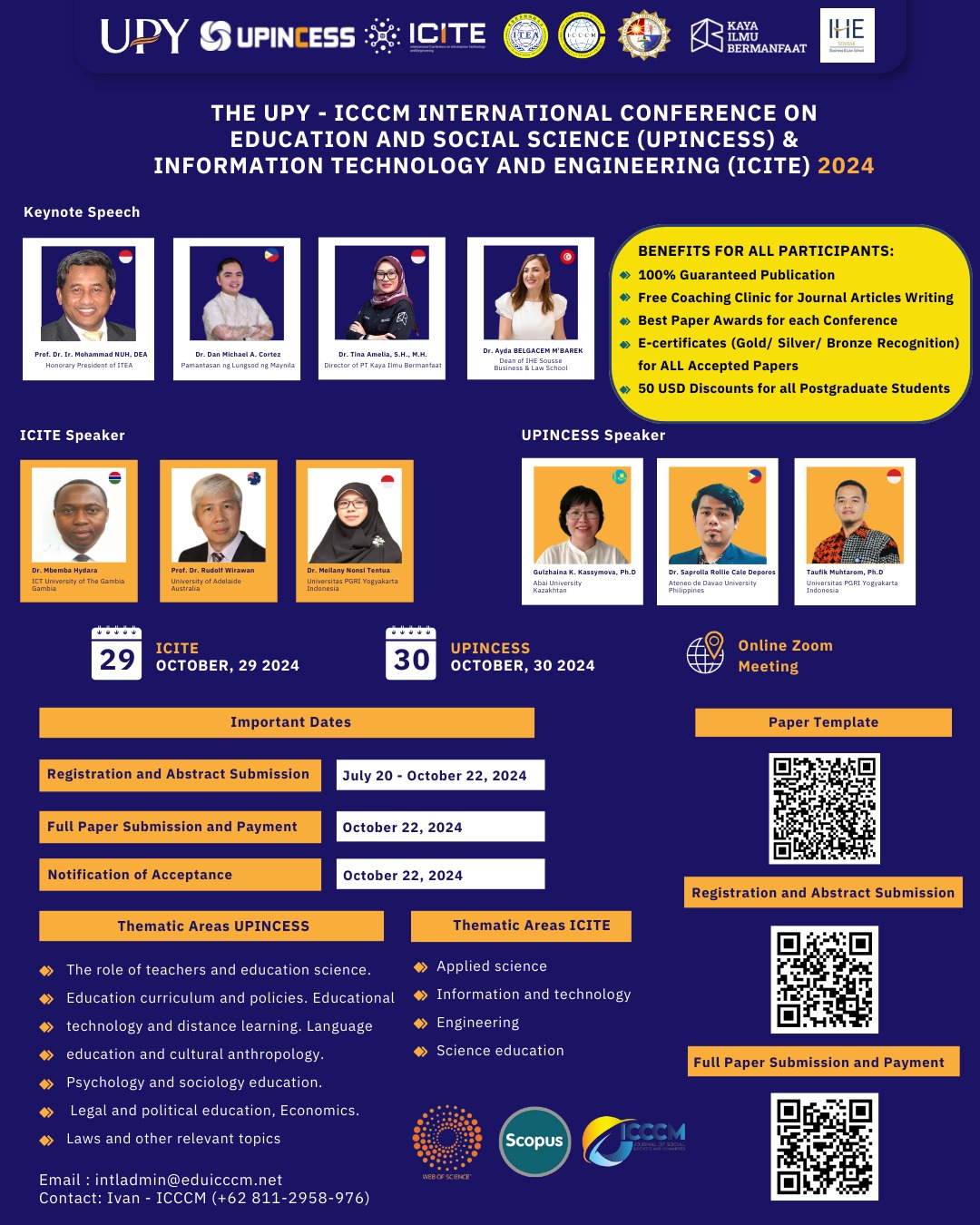Effectiveness of Using Area Models in Differentiated Learning to Enhance Literacy and Numeracy in Early Childhood Education
DOI:
https://doi.org/10.53797/icccmjssh.v3i5.3.2024Keywords:
Area model, differentiated learning, literacy, numeracy, early childhood educationAbstract
This research aims to evaluate the effectiveness of the use of the Area Model in differentiated learning to enhance literacy and numeracy in Early Childhood Education (PAUD). The research objectives include: (1) assessing the improvement in literacy and numeracy before and after the implementation of the Area Model and differentiated learning in PAUD, (2) evaluating the impact of the use of the Area Model and differentiated learning on students' literacy and numeracy improvement, and (3) assessing the extent of the influence of the Area Model and differentiated learning in enhancing literacy and numeracy at KB As-Syifa in the Bojong district. The research method employed is quasi-experimental research with a pretest-posttest control group design. The research sample consists of 16 students from Group B of PAUD aged 5-6 years at KB As-Syifa in the Bojong district, selected through Nonprobability Sampling technique. Data were collected using tests in the form of student worksheets in the area learning model. Data analysis involved descriptive methods, gain score tests, and t-tests. The results of the research indicate that: (1) there is a difference in the improvement of literacy and numeracy mastery in the experimental class after treatment using the Area Model and differentiated learning, (2) the Area Model and differentiated learning can enhance the understanding of literacy and numeracy material by 74%, with a learning approach tailored to students' interests, creating an enjoyable learning atmosphere.
Downloads
References
Aulia, Y., Dahlan, D., & Dahlan, H. M. (2024). Improving student learning outcomes through the implementation of differentiated learning in a problem-based learning model. PEDAGOGIK: Jurnal Pendidikan, 11(1), 36-53. https://doi.org/10.33650/pjp.v11i1.6146
Barham, A. I., Ihmeideh, F., Al-Falasi, M., & Alabdallah, A. (2019). Assessment of first-grade students’ literacy and numeracy levels and the influence of key factors. International Journal of Learning, Teaching and Educational Research, 18(12), 174-195.
Bracken, B. A., & Crawford, E. (2010). Basic concepts in early childhood educational standards: A 50-state review. Early Childhood Education Journal, 37, 421-430. https://doi.org/10.1007/s10643-009-0363-7
Dick, W., & Carrey, L. (1985). The Systematic Design Instruction. Secon edition. Glenview. Illinois: Scott., Foreman and Company.
Ghani, S. H. A. (2021). Understanding the Basic Concepts Of Early Childhood Education in Islamic Education. Jurnal Paradigma, 13(2), 124-151. https://doi.org/10.53961/paradigma.v13i2.84
Indrawatiningsih, N., Qomariyah, S., Nubita, A. R., & Muarofah, L. (2024). Effectiveness of Differentiated Learning in Improving Literacy and Numeracy of Primary School Students. Asian Journal of Education and Social Studies, 50(5), 8-17.
Isenberg, J. P., & Quisenberry, N. (2002). A position paper of the Association for Childhood Education International PLAY: Essential for all Children. Childhood Education, 79(1), 33-39. https://doi.org/10.1080/00094056.2002.10522763
Knapp, T. R. (2016). Why is the one-group pretest–posttest design still used?. Clinical nursing research, 25(5), 467-472. https://doi.org/10.1177/1054773816666280
Kotob, M., & Arnouss, D. (2019). Differentiated instruction: The effect on learner's achievement in kindergarten. International Journal of Contemporary Education, 2(2), 61-92. https://doi.org/10.11114/ijce.v2i2.4479
Mills, M., Monk, S., Keddie, A., Renshaw, P., Christie, P., Geelan, D., & Gowlett, C. (2014). Differentiated learning: From policy to classroom. Oxford review of education, 40(3), 331-348. https://doi.org/10.1080/03054985.2014.911725
Ministry of National Education. (2014). Peraturan Menteri Pendidikan dan Kebudayaan Republik Indonesia Nomor 137 Tahun 2014 Tentang Standar Nasional Pendidikan Anak Usia Dini.
Salminen, J., Khanolainen, D., Koponen, T., Torppa, M., & Lerkkanen, M. K. (2021, October). Development of numeracy and literacy skills in early childhood—A longitudinal study on the roles of home environment and familial risk for reading and math difficulties. In Frontiers in Education (Vol. 6, p. 725337). Frontiers Media SA. https://doi.org/10.3389/feduc.2021.725337
Shihab, N. (2015). Diferensiasi: Memahami Pelajar untuk Belajar Bermakna & Menyenangkan. Tangerang: Lentera Hati.
Singer, E. (2013). Play and playfulness, basic features of early childhood education. European Early Childhood Education Research Journal, 21(2), 172-184. https://doi.org/10.1080/1350293X.2013.789198
Watson, R., & Wildy, H. (2014). Pedagogical practice of early childhood teachers: Explicit enhancement of students' literacy. Australasian Journal of Early Childhood, 39(2), 82-90. https://doi.org/10.1177/183693911403900211
Zar'in, F., & Salehcah, S. (2021). Local Content Curriculum Model for Early Childhood Scientific Learning. Jurnal Pendidikan Usia Dini, 15(1), 81-100.
Downloads
Published
How to Cite
Issue
Section
License
Copyright (c) 2024 Kunzita Najwa, Gunawan Setiadi, Sri Utaminingsih, Lily Muliana

This work is licensed under a Creative Commons Attribution-NonCommercial-ShareAlike 4.0 International License.




